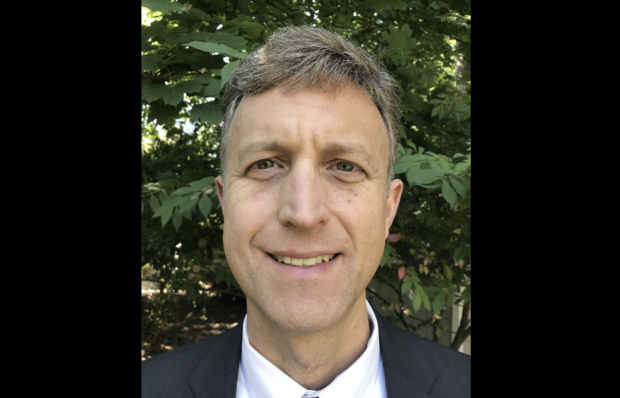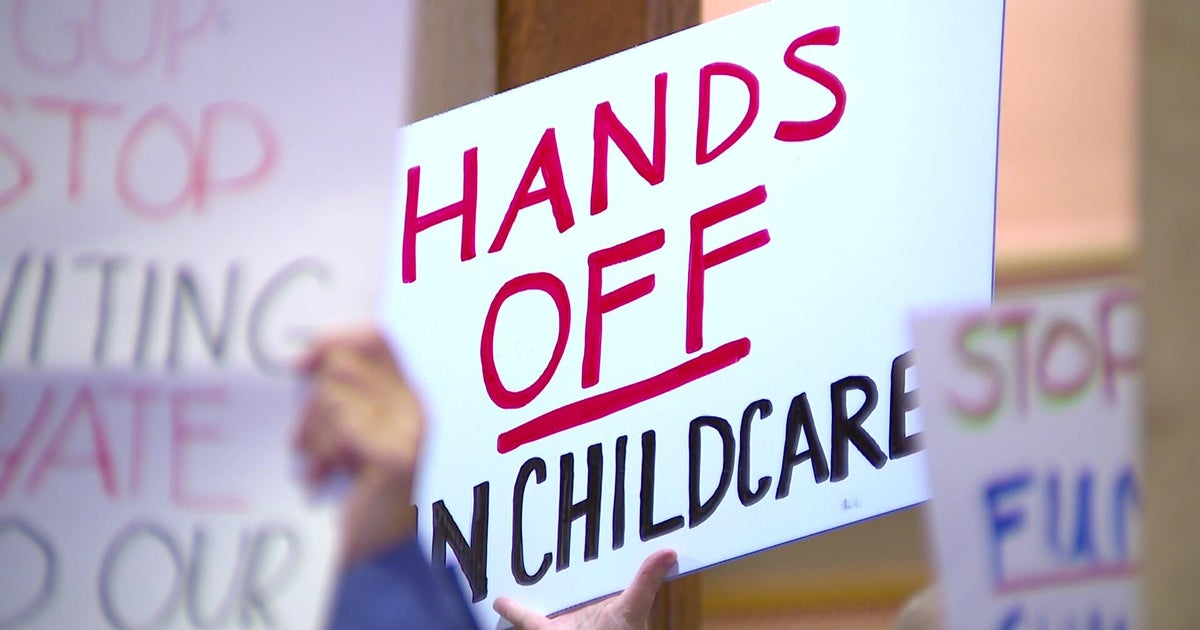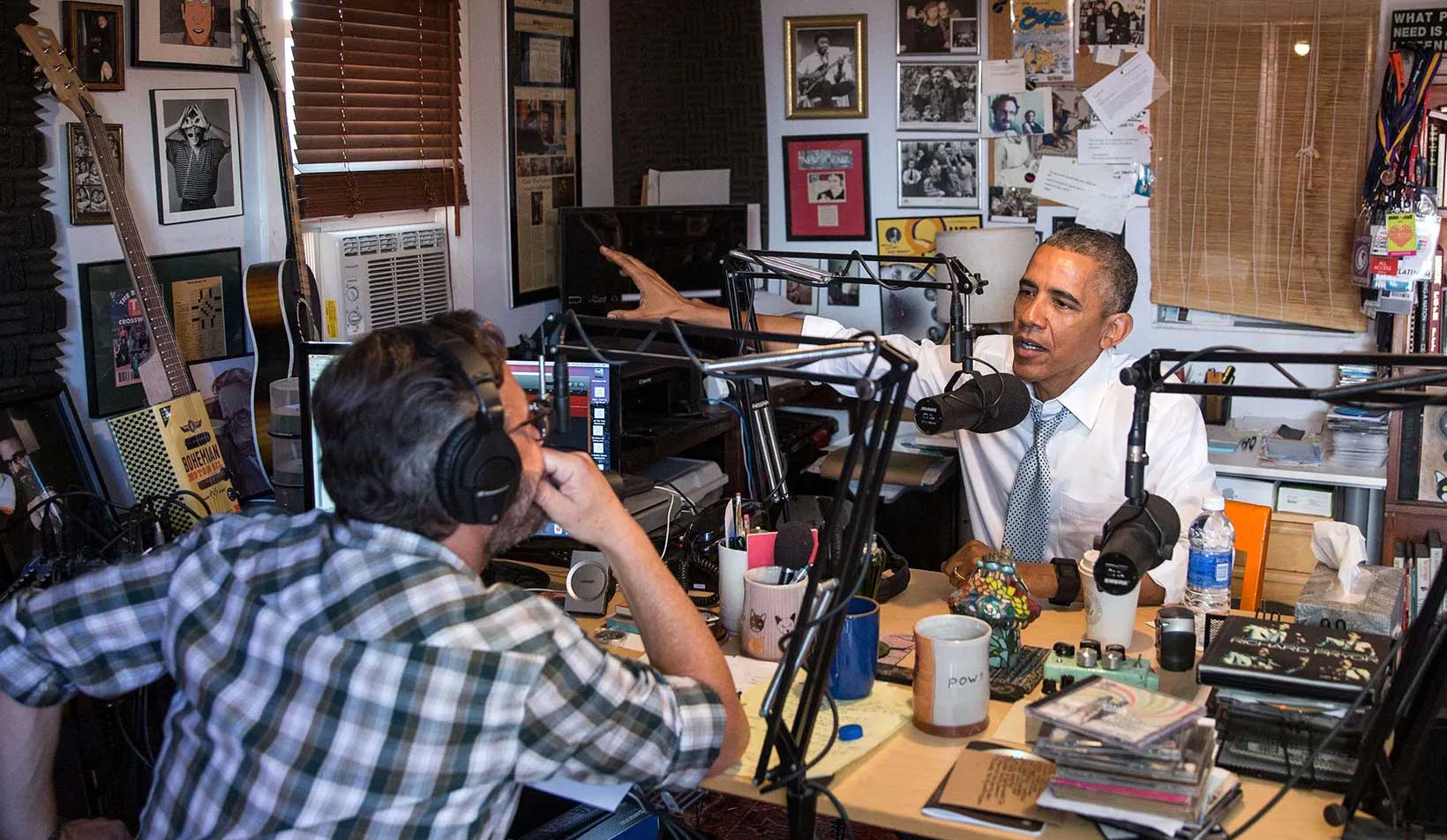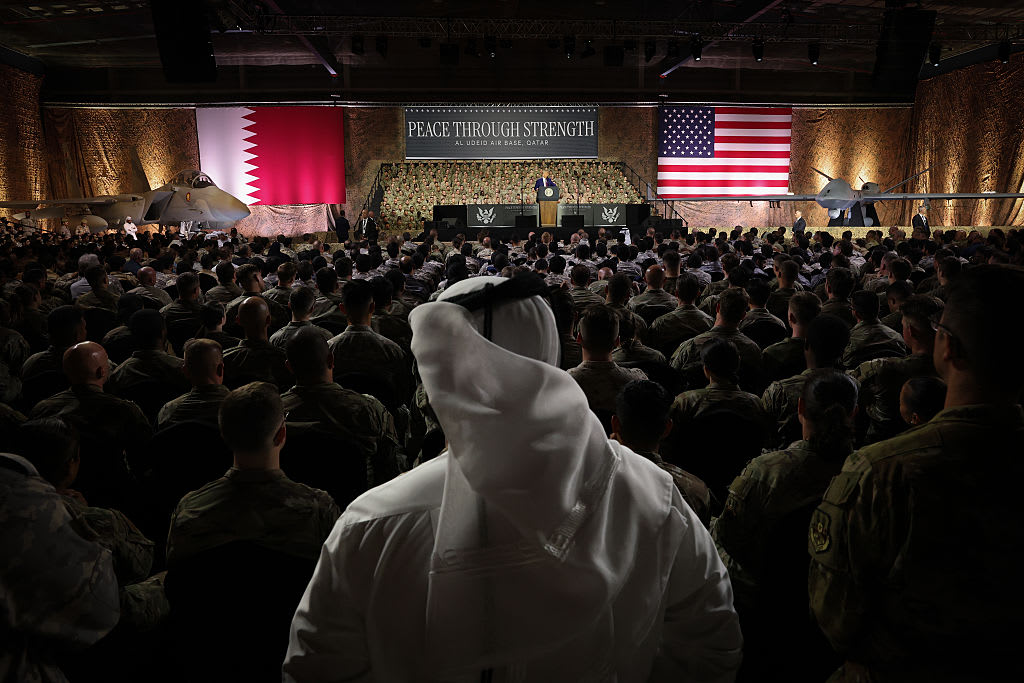West Point biochemist warns about threat of bioweapons
In this episode of Intelligence Matters, host Michael Morell speaks with Dr. Ken Wickiser, a biochemist and associate dean of research at U.S. Military Academy West Point, about his piece "Engineered Pathogens and Unnatural Biological Weapons: The Future Threat of Synthetic Biology." Wickiser describes the growing influence of synthetic biology and what can happen if it gets in the wrong hands.
Highlights
What is synthetic biology? "Synthetic biology is the process of engineering natural genetic systems. In terms of engineering: taking what nature has provided us and optimizing it, co-opting it, repurposing it, making it more efficient, and making it more cost effective. In large part for good purposes, to make new and novel biomaterials, to make new and novel pharmaceuticals. To make existing pharmaceuticals cheaper, more abundant, more available for the population."
Nefarious use of synthetic biology: "What we're concerned about is the production of either small molecules or gene products that could be used in a way that is a negative influence on someone's health. Whatever you can consider in your mind, is probably capable of being produced in the synthetic biology."
Next generation needs to learn about synthetic biology: "Whether we're talking about budding scientists or people who are interested in ethics or people who are interested in economics. We need people to understand the benefits of synthetic biology and the potential threats. That way we can develop common sense policies that will allow the science to progress, will allow us to benefit from the development of the science, but at the same time will assure our safety."
Download, rate and subscribe here: iTunes, Spotify and Stitcher.
"Intelligence Matters": Ken Wickiser transcript
Producer: Paulina Smolinksi
DR. KEN WICKISER INTELLIGENCE MATTERS TRANSCRIPT
MICHAEL MORELL: This discussion will be part of a series of episodes that we're doing between now and the inauguration on the key national security issues facing the United States. I'll let our listeners know this one is going to be a bit scary. You and your colleagues wrote a paper published in August that caught my attention. It was published by the Combating Terrorism Center at West Point, which is one of the best-known counterterrorism think tanks in the world. Your piece was titled "Engineered Pathogens and Unnatural Biological Weapons: The Future Threat of Synthetic Biology" which is what I really want to dig into today with you. But before we do that, I wanted to give you an opportunity to mention the other authors of the piece because there were quite a few.
DR. KEN WICKISER: Absolutely. Thank you for allowing me that opportunity. This was a team effort. One of the great things about West Point is that we have a really great combination of both active duty military and the government civilian faculty and staff here in our effort to help develop the next generation of army leaders. My colleagues on this particular paper include Colonel John Burpo, who has a Ph.D. from MIT in bioengineering, Lieutenant Colonel Michael Washington, who has a Ph.D. in microbiology from the Uniformed Services University of Health Sciences, Dr. Kevin O'Donovan, who is a Title 10 government civilian and the deputy director of the Life Science Program here at West Point, his Ph.D. is in neuroscience from Johns Hopkins University. We also have a returning active military officer, Lieutenant Colonel, who is now getting his Ph.D. at at Boston University. We have a group of people who are not only subject matter experts, but they are people who have operational experience. They have operational experience in the military, or in both government and in the civilian academic labs across the United States. We took a holistic view of this in the context of what do our cadets really need to know about this technology? The point here was not to be scared, but to be prepared and understand from a holistic standpoint what synthetic biology is, where it could go, and what we need to be concerned about.
MICHAEL MORELL: What is synthetic biology?
DR. KEN WICKISER: That's a great question, because it depends on who you ask. In the broadest interpretation, synthetic biology is the process of engineering natural genetic systems. In terms of engineering: taking what nature has provided us and optimizing it, co-opting it, repurposing it, making it more efficient, and making it more cost effective. In large part for good purposes, to make new and novel biomaterials, to make new and novel pharmaceuticals. To make existing pharmaceuticals cheaper, more abundant, more available for the population. Synthetic biology has been around for a long time, but it's really increased in its prevalence and its significance since the genomic age. Its prevalence increased since we really understood the nature of DNA and have been able to catalogue the structure of DNA and how genomes in particular are organized: the controlling components, the parts that make proteins, the parts that serve as stoplights or speed bumps along the way.
MICHAEL MORELL: Can you explain the concept of modularity and why that's important to synthetic biology?
DR. KEN WICKISER: I think most people understand if you take a look at an electronic circuit, there's parts that go into the electronic circuit and you have a resistor here that gets set aside, a capacitor over there. You can construct very complicated machinery with some very simplistic parts. If you take that viewpoint of how perhaps a genome is organized, you have this long strand of DNA and embedded within that DNA are the instructions for certain proteins. Some proteins are going to be turned on all the time. Some proteins are going to be turned on only some of the time. Sometimes there's an age or development aspect to it. In terms of modularity, what we're focused on is being able to lift that one segment of DNA out of one particular organism and place it in a completely different novel context, in a completely different organism, and yet have it work. Perhaps not in the way that nature intended, but in the way that you, as the bioengineer, intends for it to function. That's really what we talk about when we use the term modularity is that drag and drop, cut and paste, lift and shift, mentality when you think about engineering DNA and engineering genomes.
MICHAEL MORELL: Can you talk about the good uses that synthetic biology can do for mankind? Your piece was about a potentially bad use. I'd love for you to talk about that from the 50,000 foot level.
DR. KEN WICKISER: Synthetic biology is a tool just like a hammer. You can use it for good or you can use it for nefarious purpose. We are typically in academia focused on the good. That's the whole point of going through a PhD program, learning about how to better mankind in terms of novel materials, novel pharmaceuticals, and understanding the basic machinery of biology so that we can take care of ourselves just that much better.
MICHAEL MORELL: We can cure diseases that we've never been able to cure before.
DR. KEN WICKISER: Absolutely. We're certainly on the cusp of that. If you take a look at it from the other vantage point, if you understand biology, if you understand this network of small molecules and genes and environmental influences, then you can disrupt that. Not only for good, but perhaps for bad. What we're trying to do here is just to call attention to this tool and to bring this to the attention of developing leaders, saying 'look, you have to take this into account when developing plans for security and for operations.' We have to understand what might happen out there if technology falls into the into the wrong hands, the hands of someone who is trying to do harm to others. In our case, we're concerned about Americans. We're concerned about the American military in particular. We in no way, shape, or form want to disparage or undermine the support that synthetic biology has in the community. We value it. We use it every day in our labs here at West Point. It's used across the world, in labs, in industry, academia, government labs, all the way down even to high school labs. But I do think that we need to understand that the bar has been lowered in terms of being able to produce something that other people haven't thought of. If that something happens to be perhaps negative in nature. We need to be prepared for that.
MICHAEL MORELL: What is the risk here? What is the threat?
DR. KEN WICKISER: What we're concerned about is the production of either small molecules or gene products that could be used in a way that is a negative influence on someone's health. Whatever you can consider in your mind, is probably capable of being produced out there in the synthetic biology.
MICHAEL MORELL: So we are talking about a bioweapon here, right?
DR. KEN WICKISER: We are talking about bioweapons. Whether you talk about a material or something that happens to be infectious, that's just different levels of threat.
MICHAEL MORELL: Can you talk about the concept of binary weapons and why that's important in the context of what we're talking about here?
DR. KEN WICKISER: If you were able to take two different chemicals, each of them inert, very stable. But then when you mix them, they become robust, explosive, that would be considered a binary weapon. So you need both components in order to have that weapon. So biology could be the same thing. If I have protein X, that happens to be a poison, I could cut that in half in two different segments and have a gene product in one organism, and the gene product in another. I could produce a considerable amount of each one of those subcomponents to the poison and then mix these two together and develop that active poison for nefarious purposes. Likewise, if these two gene products happen to be housed in prokaryotes and bacteria, I could mix these together. Under favorable conditions, they could exchange genetic material and the product could be one single organism that is producing an intact product. So you have both of those halves that can come together and form that particular poison. When we talk about a binary weapon, most people think about it in terms of chemical or mechanical means. But the analogy holds when you talk about biological macromolecules.
MICHAEL MORELL: What I'm thinking is this is the biological equivalent of al-Qaida trying to bring on chemicals to those 10 to 15 aircraft flying from Heathrow. Chemicals that were inert separate, but when you put them on the plane and mix them together, all of a sudden, they became an explosive.
DR. KEN WICKISER: Unfortunately, science goes hand in hand with creativity and curiosity. It really comes down to someone with nefarious purpose, having creativity mixed in with some scientific capability that allows them to produce something that is going to be of significant concern.
MICHAEL MORELL: What's the range of risk here from the least dangerous bioweapon to the most dangerous bioweapon in terms of what synthetic biology could produce?
DR. KEN WICKISER: Part of this is fear. And then part of it is the physical infectivity that a substance might have. Or an organism might have an entity. I use those terms very broadly because it's arguable whether one calls a virus alive. Because it doesn't in and of itself have the machinery required for self replication, it requires the host to hijack and and replicate itself. But ignoring that distinction is something that is going to have that very careful balance in between lethality and infectivity across a particular population. If something was so incredibly deadly that it's going to hamstring itself in terms of being able to pass that on to the next host, then that's going to tend to die out faster than something that has that careful balance. That something is likely a virus. It could be an engineered virus. It can be microbes, living systems, small individual cells that produce toxins.
Whether you think about something that's endemic across humankind, like E. coli, without having that one genetic switch that'll change it into something that's virulent. But you can think about something that is genetically engineered like a virus. Knowing that we use this for good, it can also be used for bad. For example, in 2011 Dutch scientists wanted to create a virus and see what mutations were required in order to make it more aerosolized. They did this and they were frightened that it took so few mutations in order to make something that was very dangerous into something that was incredibly deadly. There was a large public outcry. People came back and said, 'you should not even publish this.' There was a lot of ethical considerations that went into the sharing of those data and the publication of that particular work. They used natural selection in the context of the lab in order to generate those five mutations. Now it's known that the information can be used by people to engineer a particular protein in the context of DNA and have that produced by any DNA synthesis companies. Some of them are American, but many of them are outside the continental United States. It's that information that allows us and empowers someone with nefarious purpose to use synthetic biology for their ends.
MICHAEL MORELL: In the paper, you and your co-authors give some examples of where this has already been done. Can you describe very briefly a couple of those? The first was work done in 2002 by scientists at the State University of New York at Stony Brook on the polio virus.
DR. KEN WICKISER: It's always been a goal for someone to build a genome from scratch. The question is, using state of the art chemical synthesis tools, can you construct something that is functional? That is really where that effort was born. It spawned several other efforts that eventually led up to the idea could you actually create a living cell from scratch?
It goes hand in hand with what do you actually need for a living system. What can you throw away? If you take out of a car every bit that you don't need for it to run. Seat warmers etc. That's what has been a major goal in synthetic biology efforts across the globe, because once you have that minimal structure, that biological scaffold, you can then add in whatever you want and and it's less of a load. For example, if you and I are going on a run. If you add a large backpack onto yourself, it's going to be much more exerting. The same thing happens when you engineer a small microbe. You increase the metabolic load and slow it down. But if you can get rid of all the non essential requirements, then when you actually load it up with that new system, then you will have a biological system that is not going to be loaded down as much of a natural one.
That's been the progression, going from the construct of a virus to the construct of an actual living cell. Another piece that we really wanted to bring up here is, on the good part. We have these amazing contests, international genetically engineered machine contests born out of MIT. You have this incredibly rich international group of young men and women. Primarily it was college students. Recently, they've lowered the bar of entry because so many young high school students are really interested in this work. In 2019 there was three hundred and sixty teams from across the world. About 50 percent of them came from Asia. About 20 percent were from North America. There was about one quarter of the teams that were from the high school level. About 65 percent of them are from Asia, predominantly they're from China. The great thing about synthetic biology is that there are no borders. Then again, that applies to the context of threat, to the context of force protection amongst the American population and the DOD. There might be something here of concern.
MICHAEL MORELL: Then no borders become a bad thing. It's this interesting dichotomy. You just raised an issue that caught my attention. When people used to ask me about this threat, I would say, 'yes, terrorist groups have shown interest, but doing this is very, very difficult.' One of the things that really jumped out to me in your article is that this is getting easier and easier.
Let me read a few sentences. 'The sophistication of high school and undergraduate student research projects has matched that of many highly trained personnel who are working in advanced laboratories less than a decade ago.' The second is 'these synthetic bio tools are lowering the education, training, cost, time and equipment threshold required to modify and employ pathogenic organisms as biologic weapons.'
Talk about the extent to which this is getting easier and obviously why that's important.
DR. KEN WICKISER: Let's take a look at the iGEM organization. I'm a huge fan. I participated in it for many years. They have a biosafety and security committee. They're very much attuned to the potential misuse. Outside of the context of a competition, going into perhaps non-state actors who have ill intent toward the United States, you say 'if high school students can do this across Asia, across Europe, across the United States, then take that threat scenario and apply that to something chemical or nuclear. You're not going to have high school students making the next generation nuclear weapon. But one of the amazing things about science is we're all about sharing information. We're all about publishing, we're all about planting your flag and generating bragging rights about these great advances that we make. But that also provides a great recipe for that next person.
That next person can certainly be a young individual that does not have decades of experience in laboratories. He or she can essentially do garage level science that in the past would have taken a lot of people a long time in sophisticated labs. Going back to our polio example, how long did that take these experts in the Stony Brook lab? How many years was that? How many millions of dollars was spent on that? Whereas when you talk about a young team of students, this is on the thousands of dollars scale.
If they needed ten thousand dollars worth of materials, that's highly attainable for a lot of people. These materials then really comes down to synthetic DNA, DNA that has been produced by chemically synthesizing them in a facility. These facilities are all across the world. They're all across the United States. They're all across Europe, but they're all across Asia as well. Honestly, when I have a gene synthesized or when I have a plasmid, which is a small circular chunk of DNA that has many different genes embedded within it, if I have that synthesized and I want to pay someone three thousand dollars to do that, it will probably be subcontract out to China. That's where the materials are coming from. When you talk about the sharing of materials, there's high levels of access for anybody throughout the world. This is not just something that is available to American students or postdocs or professors in American universities. This is available worldwide.
There are no boundaries when it comes to information. There are no boundaries when it comes to science, and there's certainly no boundaries when it comes to scientific expertise and interest. There is such an enormous level of interest coming out of Asia, particularly China. It's something to consider when thinking about where synthetic biology could go, not only for the good, but potentially for the bad.
MICHAEL MORELL: In your article, you and your co-authors push back on those who say that making bioweapons is much too difficult for a non-professional. You use two metaphors. Can you share those?
DR. KEN WICKISER: Twenty years ago, I would have said, 'yes, they're absolutely right, the bar is way too high.' 10 years ago, I would have said, 'yeah, sure, it's a little bit lower, but that's going to be a tough ask.' But today, it's just really not. If you go back to some of the examples we used in the paper, our home PC example. When I was young, I vividly remember my very first Apple computer. Seeing that at a college. It was almost like a museum where I was looking behind the glass, not allowed to touch it. Today look where we have gone. Along with Moore's Law. This has just exploded in terms of technology where people now have the ability to customize their entire home and have that controlled by a cell phone.
You have Moore's Law that has been allowing us via the increased computational power to do so many amazing things that we just couldn't have dreamed of 20, 30 years ago. Biology and our understanding of biology has followed a similar path. There's been an absolute explosion in our understanding of what a gene is, how to control a gene, how to get these genes from one context and put them into another.
It comes down to being able to design this online. You can do genetic engineering right from your phone. You can purchase DNA on the spot. At the end of the purchasing process, there's a little form to sign that says 'is this a poison, yes or no? Can this impact human health? Yes or no?' It really comes down to you as the purchaser being honest. We have this incredible capability in biology. Yet the controls haven't caught up to that yet, whereas perhaps controls in electronic means have. That's because to the regular nonscientist the capabilities and limitations of electronics are a lot more understandable compared to that of biology.
MICHAEL MORELL: In terms of your concerns about this, it sounds like it's primarily non-state actors, terrorist groups rather than states. Is that fair to say?
DR. KEN WICKISER: That's absolutely fair to say. At the end of the day, both Russia and China have incredibly robust scientific programs. The United States has taken steps after the fall of the Soviet Union to provide scientists from the former Soviet Union opportunities to engage in science for the benefit of mankind by setting up laboratories in countries like Georgia. But our concern here is the lowering of that bar and allowing for the ability for an untrained group of people to develop something that might negatively impact human health.
MICHAEL MORELL: Let me read two more sentences from your article. The first sentence is, 'as molecular engineering techniques of the synthetic biologists become more robust and widespread, the probability of encountering one or more of these threats is approaching certainty.' The second is 'the change to the threat landscape created by these techniques is rivaled only by the development of the atomic bomb.' Those are two pretty significant sentences, so what do we do about this? What's the right policy response? How do we defend ourselves?
DR. KEN WICKISER: I go back to say the iGEM field. They are very much interested in biosecurity and infusing the thought of biosecurity in these young budding scientists. Whether they be Americans or people from foreign countries. But we also have in the United States several organizations dedicated to biosecurity, including the Defense Threat Reduction Agency and their chemical biological defense division. The entire research there is a lead by Dr. Ronald Han, and he has an amazing portfolio. They are very dedicated to addressing this field. There's BARTA. There's DARPA. DARPA has several different programs that are addressing the potential threat of synthetic biology, whether it be a normal genetic engineering or the whole CRISPR effort. That has really exploded the field over the past several years. So we do have organizations, whether they be private, non-profits, or governmental organizations that are addressing this. I think it's probably incumbent upon us to weave this into the educational experience of young people. Whether we're talking about budding scientists or people who are interested in ethics or people who are interested in economics. We need people to understand the benefits of synthetic biology and the potential threats. That way we can develop common sense policies that will allow the science to progress, will allow us to benefit from the development of the science, but at the same time assure our safety.
MICHAEL MORELL: Thank you so much for joining us. Thank you for your service to our country, which continues to this very day. And in educating the young women and young men who will lead the United States Army in the future.






